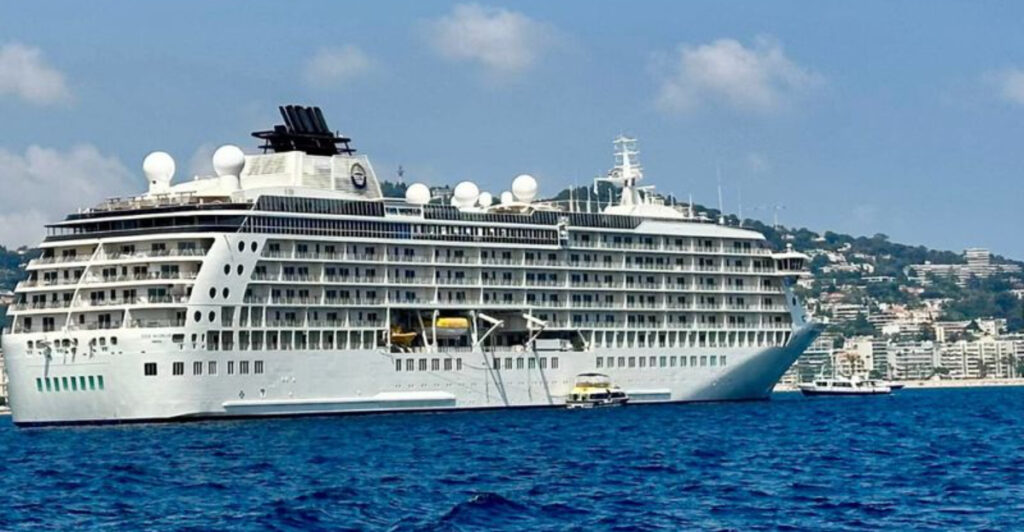Cruise ship tourism has seen an increasing trend of restrictions and bans across various global ports, primarily due to concerns over environmental impact, overtourism, and preservation of local heritage. The following list details 12 notable ports that have imposed size restrictions on cruise ships, reflecting a growing movement towards sustainable tourism.
1. Venice, Italy
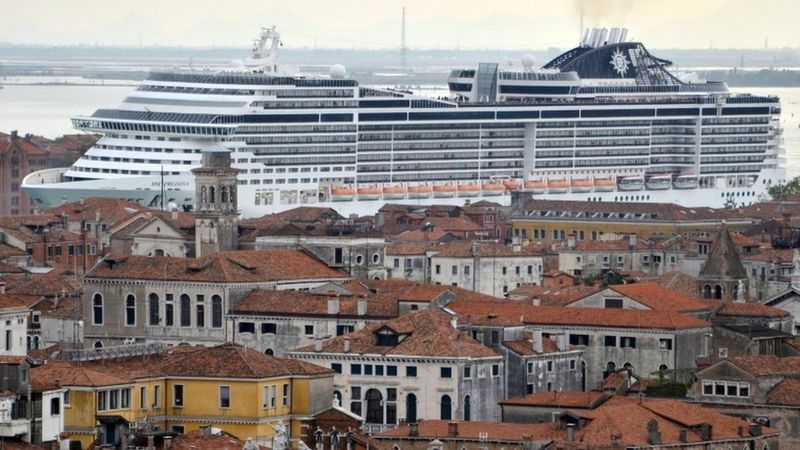
Venice, renowned for its breathtaking canals and historic architecture, took a bold step in 2021 by banning cruise ships exceeding 25,000 gross tons from entering the Giudecca Canal and St. Mark’s basin. This decision was fueled by the urgent need to preserve fragile canals and protect UNESCO-listed heritage sites from the erosive effects of large vessels. The initiative aims to balance tourism and conservation, ensuring Venice remains a cultural gem for future generations. The ban was met with both applause and criticism, reflecting the complex dynamics of tourism-dependent economies. Furthermore, the measure highlighted Venice’s commitment to sustainable tourism, prioritizing long-term preservation over immediate economic gains. Such decisive action underscores the global shift towards protecting cultural landmarks from tourism-related degradation. Venice becomes a symbol of resilience, adapting to modern challenges while cherishing its historical roots.
2. Barcelona, Spain
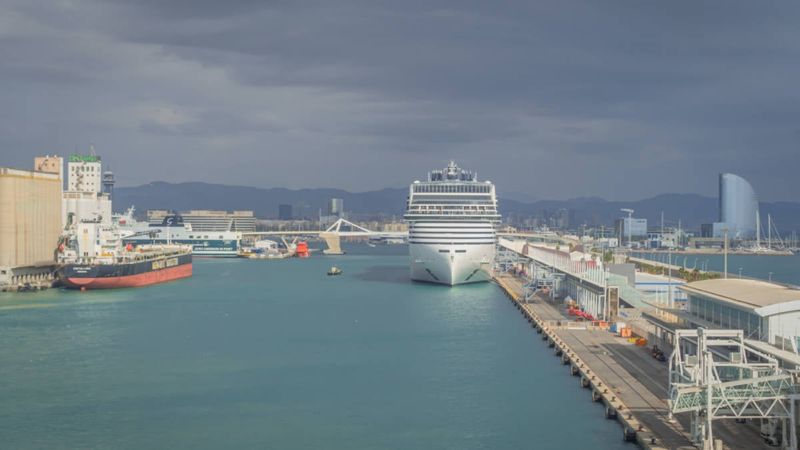
Barcelona, a city famous for its vibrant culture and stunning architecture, has significantly reduced cruise ship traffic to mitigate air pollution and overcrowding. The Catalan government announced plans to limit large cruise liners, aiming to address environmental concerns and enhance the quality of life for residents. This move supports Barcelona’s broader strategy to combat climate change and promote sustainable urban tourism. By curtailing the influx of massive vessels, the city seeks to preserve its unique charm and livability. Tourists and locals alike are encouraged to explore alternative transportation modes, fostering a more intimate connection with the city’s rich heritage. As Barcelona navigates the complexities of tourism management, its proactive approach serves as a model for other urban centers grappling with similar issues. The city’s dedication to sustainability elevates its status as a global leader in responsible tourism practices.
3. Valencia, Spain
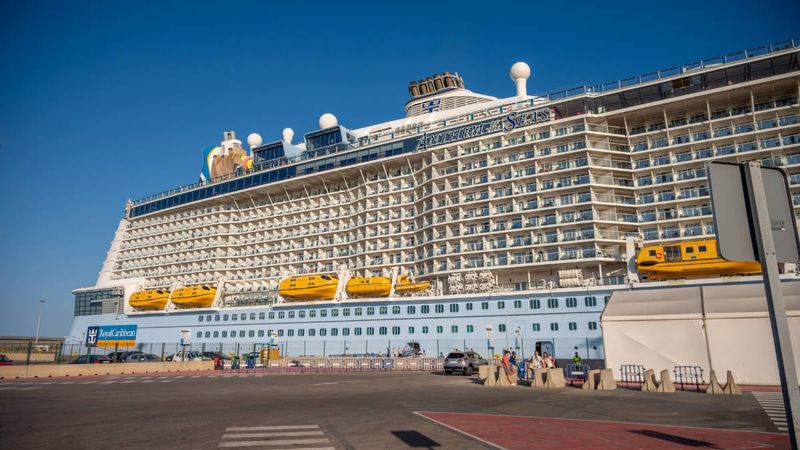
Valencia, a thriving port city on Spain’s eastern coast, is poised to ban mega-cruise ships entirely by 2026. The decision prioritizes the quality of life for residents and seeks to minimize the environmental footprint of tourism. This initiative is part of a broader effort to foster sustainability and protect local ecosystems from the adverse effects of mass tourism. By focusing on smaller vessels, Valencia aims to attract a more mindful traveler, one who appreciates the city’s history, culture, and culinary offerings. This strategic shift also aligns with global trends, as cities worldwide grapple with balancing tourism and sustainability. The ban on large cruise ships symbolizes Valencia’s commitment to preserving its identity while embracing a greener future. The move garners support from environmentalists and locals, reinforcing the city’s progressive stance on tourism management.
4. Palma de Mallorca, Spain
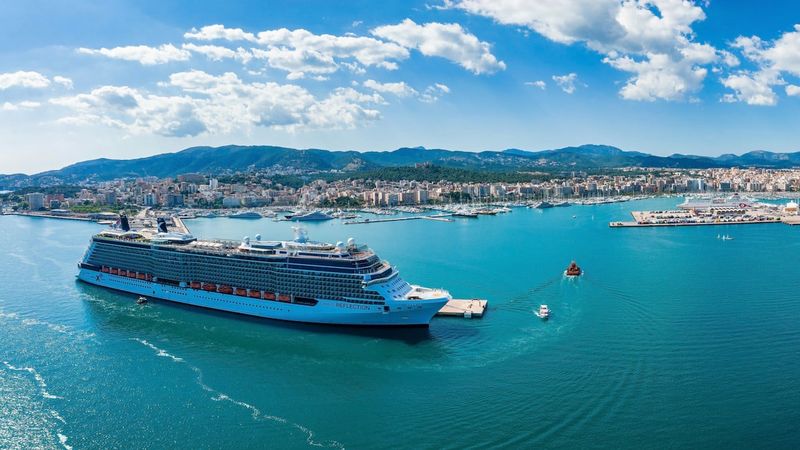
In the heart of the Balearic Islands, Palma de Mallorca has set limits on cruise ship arrivals since 2022, allowing only three ships per day and capping large vessels at 5,000 passengers. These restrictions aim to combat the negative impacts of overtourism, such as environmental degradation and diminished resident quality of life. As a popular Mediterranean destination, Palma de Mallorca’s measures reflect a growing awareness of tourism’s environmental footprint. By prioritizing sustainable practices, the city seeks to preserve its natural beauty and cultural heritage. This approach encourages a more responsible form of tourism, where visitors are invited to explore the island’s charms thoughtfully. The initiative also aligns with global efforts to protect fragile ecosystems and promote eco-friendly travel. Palma de Mallorca’s commitment to sustainability sets a precedent for other tourist hotspots facing similar challenges.
5. Nice (Villefranche-sur-Mer), France
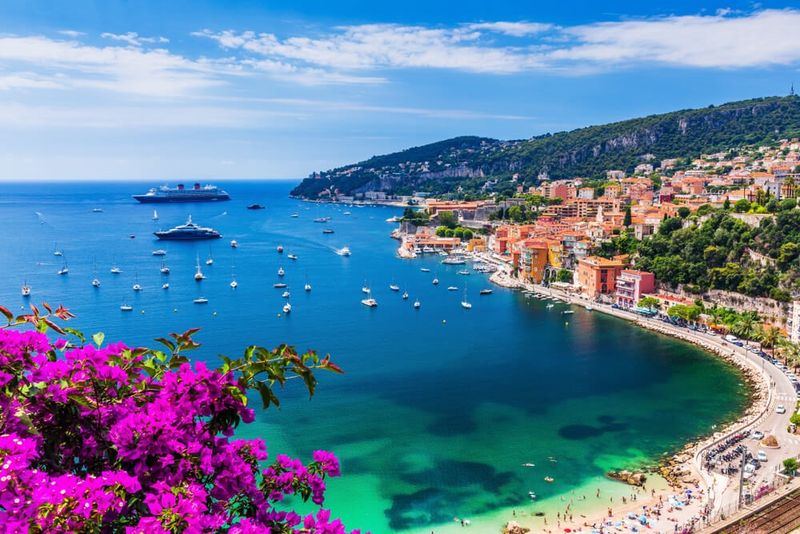
The picturesque harbor of Villefranche-sur-Mer, near Nice, has implemented a ban from July 2025 on cruise ships carrying over 900 passengers. Officials describe these vessels as “monsters of the seas,” highlighting the strain they place on local infrastructure and the environment. This decision is part of a broader initiative along the French Riviera to protect its pristine coastline and ensure sustainable tourism. By imposing these restrictions, Villefranche-sur-Mer seeks to maintain its allure as a charming, tranquil destination. The move has been welcomed by environmentalists and residents alike, who hope to see a reduction in pollution and overcrowding. This proactive stance reflects a growing trend among Mediterranean destinations to preserve their unique ecosystems and cultural heritage. The policy serves as a testament to the region’s dedication to maintaining its natural beauty for future generations.
6. Cannes, France
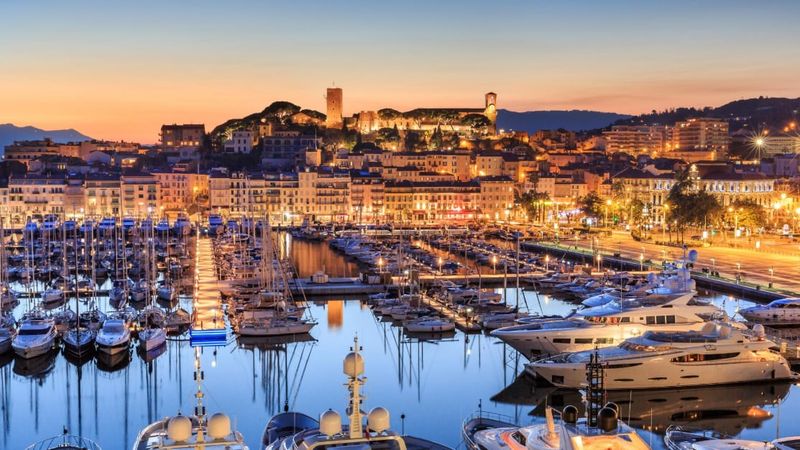
Cannes, synonymous with glamour and the iconic film festival, will enforce a ban on cruise ships exceeding 1,300 passengers by 2026. This regulation allows large vessels to anchor offshore, transferring passengers to the port by tender, and limits daily disembarkations to 6,000. These measures aim to alleviate the environmental and infrastructural pressures associated with mass tourism. Cannes’ decision underscores its commitment to preserving the city’s elegance and the surrounding natural beauty. By embracing sustainable tourism practices, Cannes sets a benchmark for other luxury destinations worldwide. The policy reflects a broader movement along the French Riviera, where towns are increasingly prioritizing the preservation of their cultural and ecological heritage. This shift towards sustainable tourism is a testament to Cannes’ proactive approach, ensuring the city remains a coveted destination for discerning travelers.
7. Amsterdam, Netherlands
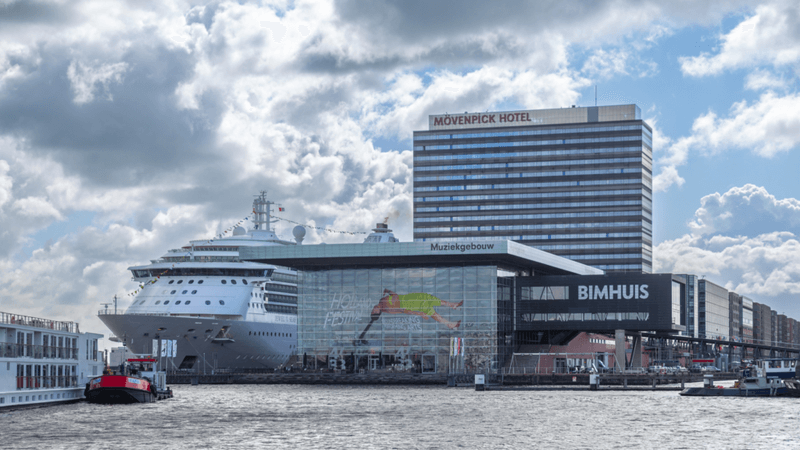
Amsterdam, known for its canals and vibrant culture, is closing its central cruise terminal to phase out large-scale maritime tourism and address overtourism. The decision aligns with the city’s broader efforts to enhance the quality of life for residents and preserve its unique urban landscape. By reducing the influx of massive cruise ships, Amsterdam aims to foster a more sustainable tourism model. The city encourages visitors to explore its rich history and cultural attractions on foot or by bicycle, promoting a more intimate and eco-friendly experience. This initiative reflects a growing trend among global cities to balance tourism with environmental sustainability. Amsterdam’s strategic approach serves as a model for other urban centers facing similar challenges, demonstrating a commitment to protecting its heritage while adapting to modern demands. The closure of the cruise terminal marks a significant step towards achieving these goals.
8. French Polynesia (Bora Bora & others)
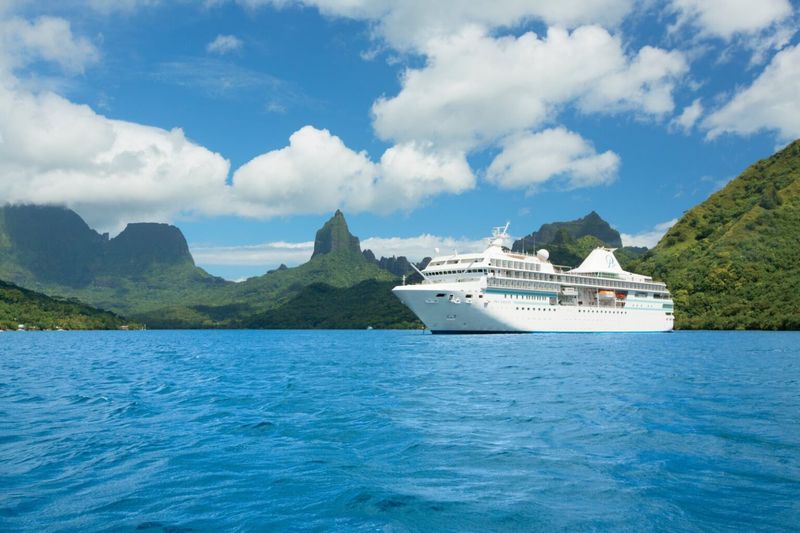
In the idyllic paradise of French Polynesia, cruise ships carrying over 3,500 passengers have been banned since January 2022. The restrictions extend further, with some islands capping daily visitor numbers to just 1,200. These measures aim to protect the delicate ecosystems and stunning natural landscapes that define this tropical haven. The policy reflects a commitment to sustainable tourism, ensuring that the pristine environment and vibrant marine life are preserved for future generations. By limiting large-scale tourism, French Polynesia promotes an immersive travel experience, where visitors can connect deeply with the islands’ culture and natural beauty. This approach garners praise from environmental advocates, highlighting the region’s dedication to conservation. French Polynesia’s stance serves as an inspiration for other destinations seeking to balance tourism with ecological preservation. The ban emphasizes the importance of safeguarding these precious landscapes.
9. Iceland – Westfjords (Hornstrandir)

The remote and awe-inspiring Hornstrandir Nature Reserve in Iceland’s Westfjords has set a size cap on visiting vessels, limiting entries to ships with fewer than 500 passengers by 2024. This initiative aims to protect the fragile tundra and local wildlife from the impacts of mass tourism. The decision reflects Iceland’s broader commitment to preserving its unique natural heritage, ensuring that the stunning landscapes remain untouched for generations to come. By focusing on smaller, more sustainable tourism, the Westfjords offer a more intimate and environmentally friendly experience for visitors. This policy aligns with global trends towards sustainable travel, highlighting the importance of protecting natural ecosystems from overexploitation. The Westfjords’ dedication to conservation sets a precedent for other remote destinations worldwide. The size cap emphasizes the need to balance tourism with ecological stewardship, ensuring the preservation of Iceland’s breathtaking beauty.
10. Bar Harbor, Maine, USA
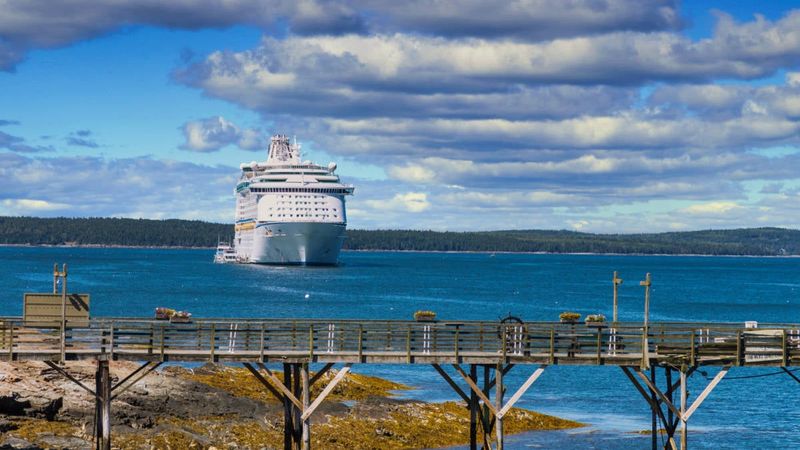
Nestled along Maine’s rugged coastline, Bar Harbor has capped cruise ship disembarkations at 1,000 passengers per day starting 2024. This regulation aims to prevent the deployment of typical 3,000+ passenger vessels, mitigating the effects of overtourism. Bar Harbor’s decision reflects a commitment to maintaining the town’s charm and preserving the natural beauty of Acadia National Park. By limiting large-scale tourism, the town seeks to enhance the experience for visitors and residents alike. This initiative aligns with broader trends across New England, where communities strive to balance tourism with environmental conservation. Bar Harbor’s proactive approach serves as a model for other coastal towns facing similar challenges. The cap on disembarkations underscores the importance of sustainable tourism, ensuring that the area’s unique landscapes and cultural heritage are protected for future generations. This policy represents a forward-thinking approach to tourism management.
11. Belfast, Maine, USA
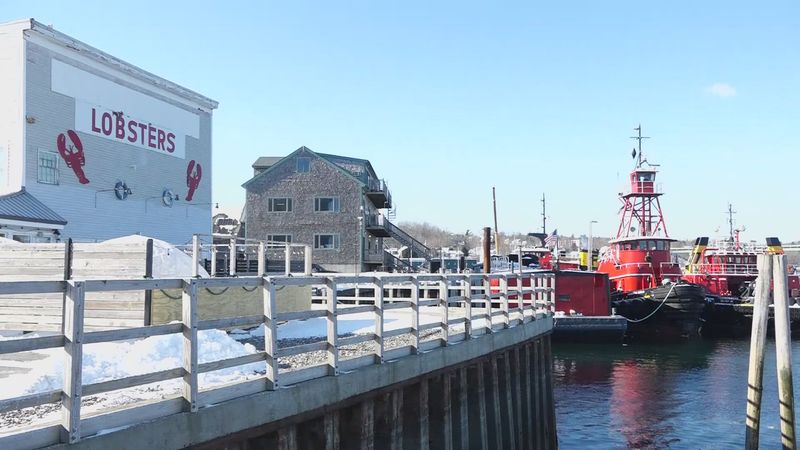
The quaint town of Belfast, Maine, has taken a firm stance against large cruise ships, banning them entirely due to safety concerns and congestion from buses and tours. This decision prioritizes the welfare of residents and ensures that the town’s character remains intact. By restricting large-scale maritime tourism, Belfast aims to offer a more personalized and relaxed visitor experience. The town’s commitment to preserving its charm and natural beauty reflects a broader movement towards sustainable tourism. By focusing on smaller vessels, Belfast can attract visitors who appreciate its rich history and scenic landscapes. This approach is part of a regional trend across New England, where communities are increasingly prioritizing sustainability over mass tourism. Belfast’s proactive policy serves as an example for other small towns seeking to balance tourism with quality of life. The ban highlights the importance of maintaining the town’s unique identity.
12. Key West, Florida, USA
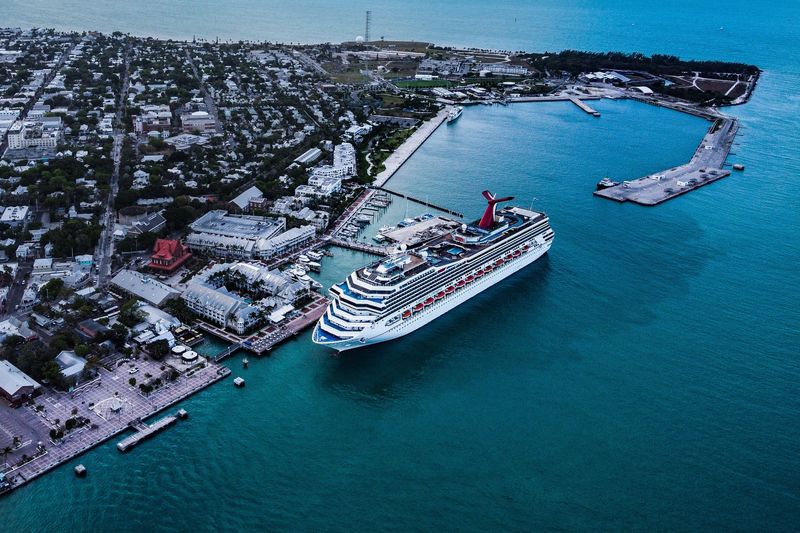
Key West, famous for its colorful culture and laid-back vibe, has imposed restrictions on large cruise ships despite a 2020 Charter amendment being overturned. Local piers enforce a ban on docking by large vessels, allowing only small ship lines to operate. This decision aligns with the community’s desire to preserve Key West’s unique atmosphere and protect its fragile marine ecosystems. By limiting large-scale tourism, the town seeks to enhance the quality of life for residents and offer a more intimate experience for visitors. This policy reflects broader trends in the Florida Keys, where sustainability and environmental conservation are paramount. Key West’s proactive approach serves as a model for other coastal destinations grappling with similar challenges. The restrictions underscore the importance of balancing tourism with ecological stewardship, ensuring that Key West remains a cherished destination for years to come.
13. Other Mediterranean cities (general trend)
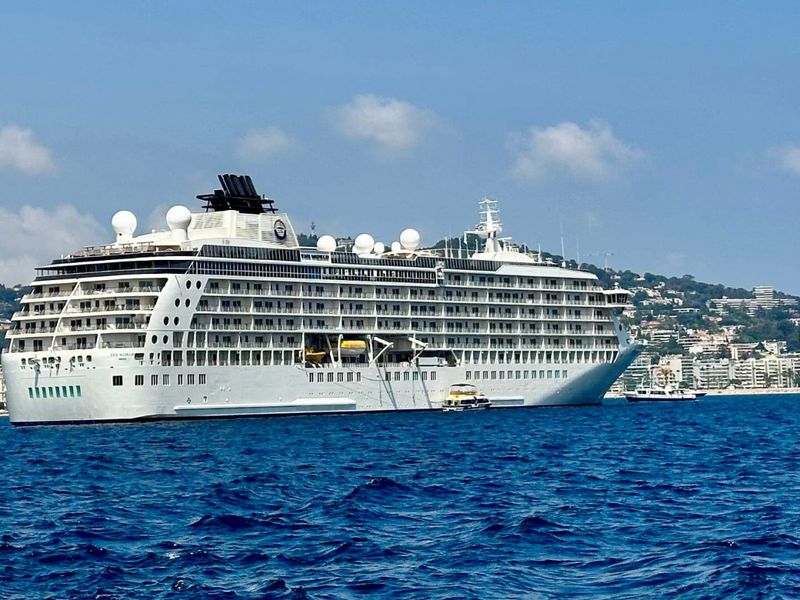
Across the Mediterranean, cities are increasingly drafting port-size bans to address the challenges posed by large cruise ships. Although not all have set exact dates, the movement towards sustainable tourism is gaining momentum. These restrictions aim to mitigate environmental impact, reduce overcrowding, and preserve cultural heritage. By focusing on smaller vessels, Mediterranean cities can attract more conscientious travelers and offer a more authentic experience. The trend reflects a global shift towards balancing tourism with conservation efforts, ensuring that these destinations remain vibrant and livable for residents. This proactive approach highlights the importance of protecting fragile ecosystems and maintaining the quality of life for local communities. The general trend among Mediterranean cities serves as an inspiration for other regions seeking to address the challenges of mass tourism. The emphasis on sustainability underscores the need for responsible tourism practices.
14. Cruise backlash movement overall
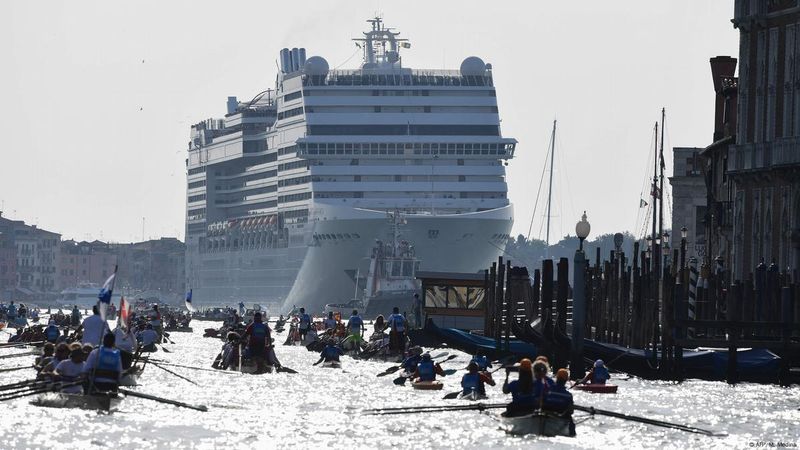
The global backlash against large cruise ships, often referred to as “cruisezillas,” reflects mounting concerns over overtourism, environmental impact, and infrastructure strain. Campaign groups and governments worldwide are advocating for limits, bans, and taxes to address these challenges. This movement underscores the urgent need to balance tourism with ecological preservation, ensuring that destinations remain viable for future generations. By implementing such measures, cities aim to protect their natural and cultural heritage from the adverse effects of mass tourism. The cruise backlash movement reflects a growing awareness of the environmental footprint of mega-ships and a commitment to fostering sustainable travel practices. This global trend highlights the importance of responsible tourism, as destinations seek to preserve their unique character while accommodating visitors. The movement serves as a call to action, encouraging cities worldwide to prioritize sustainability and conservation in their tourism strategies.

